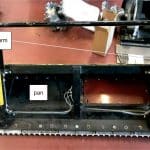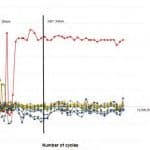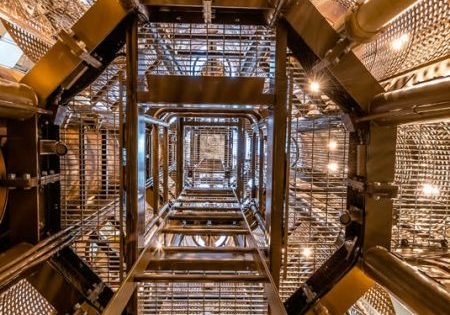LU pioneers the art of prolonging the lifespan of escalator steps in the U.K.
London Underground (LU) scraps a significant number of steel escalator steps each year based upon criteria laid out in the LU Escalator Category 1 standard. Your author has examined the possibility of relaxing the stringent criteria for weld defects (thus reducing scrapping costs), while ensuring safety.
The LU standard mandates that a minimum sample of 10 steps from each escalator should be formally inspected every year for suspect indications. A step fails the test if any defects are found in a non-welded metal (parent) or if a crack longer than 5 mm is found in the area where the weld meets the parent metal. In either case, the step will be replaced with a new one at a cost of approximately GBP750 (US$969). Additional inspections are carried out on an escalator in which even one of its steps is found to contain a suspect indication.
Defects in steps’ welds can develop due to manufacturing errors or fatigue damage by cyclic loading, the latter of which manifests more frequently in welds than in parent metal. Your author explored methods to ensure their structural integrity with a less-demanding criterion: changing the acceptable weld defect length from 5 to 10 mm. We are trying to discover and unveil the art of prolonging the lifespan of escalator steps without compromising safety. Theoretical and experimental programs have been planned and put in action to verify this issue and place new foundations for future development in this subject.
Escalators are subjected to a significant number of cyclic stresses. The cumulative effect of these cycles in the step structure has the potential to initiate cracks, especially at sensitive locations, such as welds. It is, therefore, very important that the behavior of the steps is fully understood so there is no risk of an unsafe condition developing.
Simulation and Testing
A simulation of different crack lengths in the weld between the top of the step yoke arm and pan (Figure 1) was analyzed. It was found that after an initial increase in the stress level, there is no increase at the crack tip when the crack is 20 mm long. This finding has a significant effect on the way steps with cracks are managed and ensured for safety, especially if supported by experimental testing.
Prior to laboratory testing, a finite element analysis (FEA) computer simulation investigation was conducted to evaluate the impact of different crack lengths in a specific step area where a cracklike indication is traditionally known to be exhibited. Similar principles are deployed in many industries, such as rail transportation (rolling stock) and aeronautics.
We carried out a test on a step with a crack in the joint between the yoke arm and pan using a test rig (Figure 2). The crack length was monitored and measured throughout 10 million cycles under torsional loading (horizontal twisting of the step), which is considered the most significant source of step stress. It arises from irregularities in the tracking system of the escalator on which the steps run. If a defect is stable up to 10 million cycles at ±3 mm of twist, then the accepted limit, beyond which no further crack propagation can occur in accordance with European and British standards, has been achieved.
The strain readings were plotted against the number of cycles (Figure 3). The monitoring gauges were mounted at different locations in the step. The gauges did not show any significant variation over the number of cycles, except strain gauges 6 and 7, which showed changes. Strain gauge 6 showed the stress level where the crack presents (increased then decreased due to load transfer). However, strain gauge 7 showed the stress begin to increase moderately as the stop pivoted (opposite to the side of the step that had the crack) during the test.
The frequent measurements of crack lengths showed an increase from only 20 to 24 mm over 0.7 million-4.7 million cycles (Figure 3, markup lines). FEA and testing contributed to providing assurance that this type of escalator step with this defect is safe to operate in customer service. This has been supported by regular, nondestructive examination of a sample of steps from each escalator in service. Testing has concluded that a 10-mm defect is acceptable.
Acknowledgements
Your author would like to thank Dr. Tony Miller, with L&E Engineering, and Benjamin Wilson, a graduate engineer who aided in setting up the test described here, for their assistance.
- Figure 1: A step with the yoke arms and pan (seen from underneath)
- Figure 2: This rig for escalator step testing is situated at the Frank Pick House in Acton, U.K.
- Figure 3: A graph of the variation in the strain (stress) levels on both sides of the step
Get more of Elevator World. Sign up for our free e-newsletter.












